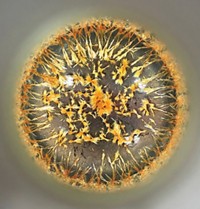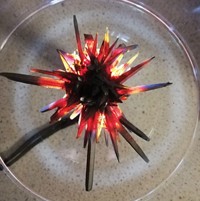Advertisement
Grab your lab coat. Let's get started
Welcome!
Welcome!
Create an account below to get 6 C&EN articles per month, receive newsletters and more - all free.
It seems this is your first time logging in online. Please enter the following information to continue.
As an ACS member you automatically get access to this site. All we need is few more details to create your reading experience.
Not you? Sign in with a different account.
Not you? Sign in with a different account.
ERROR 1
ERROR 1
ERROR 2
ERROR 2
ERROR 2
ERROR 2
ERROR 2
Password and Confirm password must match.
If you have an ACS member number, please enter it here so we can link this account to your membership. (optional)
ERROR 2
ACS values your privacy. By submitting your information, you are gaining access to C&EN and subscribing to our weekly newsletter. We use the information you provide to make your reading experience better, and we will never sell your data to third party members.
Synthesis
Chemistry In Pictures
Chemistry in Pictures: Molecular marshland
by Brianna Barbu
March 16, 2023

Look closely and you’ll see the “cattails” in this tranquil glowing pond are in fact crystals of a fluorescent organic molecule clinging to fiberglass filaments inside a Soxhlet apparatus, a piece of lab glassware used for chemical extractions. The image comes courtesy of Christopher Brewer, a postdoctoral scholar in the Castellano lab at North Carolina State University. Brewer works on designing new fluorescent emitters for organic light-emitting diodes. The compounds he works with have rigid conjugated structures, so the molecules don’t dissolve easily in most solvents. So, to purify this blue-emitting molecule he made, Brewer turned to Soxhlet extraction, a technique that percolates hot solvent over a solid to slowly dissolve it. But when he left the solution overnight, the compound began to crystallize on the glass wool he’d packed into the extractor to filter out insoluble impurities, transforming the apparatus into something resembling an alien wetland.
Submitted by Christopher Brewer
Do science. Take pictures. Win money. Enter our photo contest here.





Join the conversation
Contact the reporter
Submit a Letter to the Editor for publication
Engage with us on Twitter